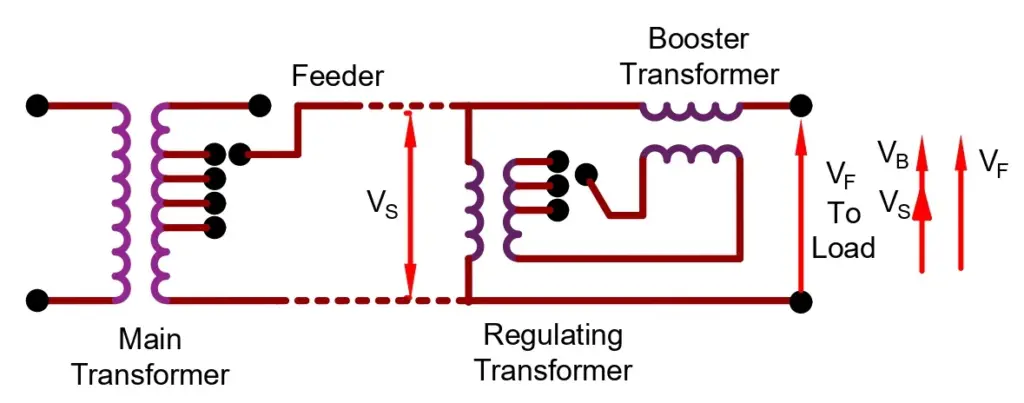A booster transformer is commonly used near the end of a power transmission line to increase the voltage to a desired level. It regulates the voltage of a feeder located far away from the main transformer.
Working of Booster Transformer

The booster transformer’s secondary is connected in series with the line, while its primary is fed from the regulating transformer’s secondary. The regulating transformer’s output winding is linked to the booster transformer’s primary in such a way that the voltage injected into the line (VB) is in phase with the supply voltage (VS).
Suppose that the voltage at the starting point is 25 kV and the voltage at a location 2 KM away is 24.1 kV. In this case, the booster transformer’s secondary voltage will be 0.9 kV, and the voltage at the end of the line will be 24.1 + 0.9 = 25 kV.
The regulating transformer allows for the adjustment of the voltage on the feeder VF by adjusting the taps to change the magnitude of VB. The rating of the regulating transformer is only a fraction of that of the main transformer and can be calculated using the mathematical expression given below.

The advantage of the above system is that the regulating equipment is independent of the main transformer, so a failure in the former will not put the latter out of service.
The disadvantages of the above system are that the booster transformers are more expensive and require more space for their installation. The system becomes less efficient because of losses in the booster and regulating transformer.
Conclusion:
The booster transformer compensates the line voltage drops and maintains the desired voltage at the far end of the transmission line. Booster transformers are used in railway power lines to prevent stray currents from causing damage to electronic devices and communication systems of the trains passing through them.